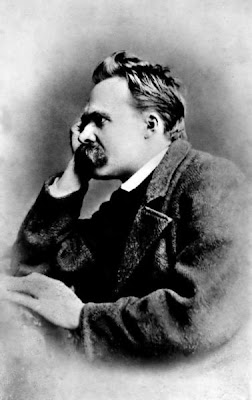
More than 50 years after its release, Otto Preminger's Anatomy of a Murder (1959) still reigns as cinema's most gripping and realistic courtroom drama. (Click here for the movie trailer which lasts nearly 5 minutes.)
Based on the 1958 novel by Michigan Supreme Court Judge Robert Traver, which in turn was based on a real-life murder in Michigan's upper peninsula, it is a story of rape, sex, murder, insanity and . . . panties. Anatomy of a Murder was so direct in its treatment of sex and rape that Chicago Mayor Richard Daley banned the movie from being shown in Chicago theaters until Preminger went to court and had the ban overturned.
Even today, the movie remains a frank treatment of rape, lust, sex and violence. But the movie also gets the law right. The objections, the rulings, the instructions to the jury - they all ring true. The movie stands as a testament to the fact that writers can get the law right and not reduce the dramatic tension or compromise the plot.
Click here for a great YouTube clip on three reasons why Anatomy of a Murder remains a great movie.
Jimmy Stewart plays former prosecutor, now defense lawyer, hired to represent a soldier (Ben Gazara) accused of murdering his wife's rapist. After Stewart takes time to explain the defense of irresistible impulse, and giving the soldier time to consider it, the soldier's story fits neatly into the available defense.
 The movie is rare in that the prosecution is not portrayed as evil. George C. Scott plays the talented prosecutor who is effective in presenting his case and gives what Stewart's character calls the "best closing argument I've ever seen." He makes only one mistake - one which many lawyers make. He asks a question he doesn't know the answer to. And it bites him and his case.
The movie is rare in that the prosecution is not portrayed as evil. George C. Scott plays the talented prosecutor who is effective in presenting his case and gives what Stewart's character calls the "best closing argument I've ever seen." He makes only one mistake - one which many lawyers make. He asks a question he doesn't know the answer to. And it bites him and his case.At the center of the trial are the wife's panties. (Click here for clip as the lawyers discuss what term to use for the undergarment) And the court's handling of the subject is a classic of both cinema and a lesson for courtrooms. The judge turns to the jury and explains that a word will be used. He says "Panties" and the jury titters. The judge instructs the jury to get all their laughter out of the way because from that point forward, the term was to be used as an important matter of evidence and was to be taken seriously by the jury.
The wife (played by Lee Remick) must answer about her panties. Did she lose them? Did she wear them? Did she go out to bars not wearing them? Even today, it is an uncomfortable examination, culminating in the judged admonition to the prosecutor to "get off the panties." It all leads to the stunning truth, or maybe the truth, about the wife's relationship to the murdered man - the man she said raped her
Click here for a clip of George C. Scott's cross exam of the wife.
The ending of the movie, as so often happens in real life, is ambiguous. The jury has decided the case, but maybe not the truth, and certainly not the whole truth. There are hints about what wasn't disclosed in court, but no clear cut answers.
The only absolute truth comes the day after the trial concludes. Jimmy Stewart and his buddy (character actor Arthur O'Connell) show up at the soldier's trailer to collect the lawyer's fee. The trailer is there, but Gazarra and Remick are gone. Amid the broken whiskey bottles, Stewart find a note explaining that they left because they were "seized with an irresistible impulse."
So in the end, maybe that is what makes this the most accurate of all legal dramas. The lawyer worked hard, got a great result, but in the end got stiffed on his bill by an ungrateful client.
Note: Anatomy of a Murder is also known for its classic opening sequence and its jazz soundtrack by Duke Ellington, who also has a small dramatic role in the movie. Click here for the opening title sequence featuring the music of Duke Ellington.





















